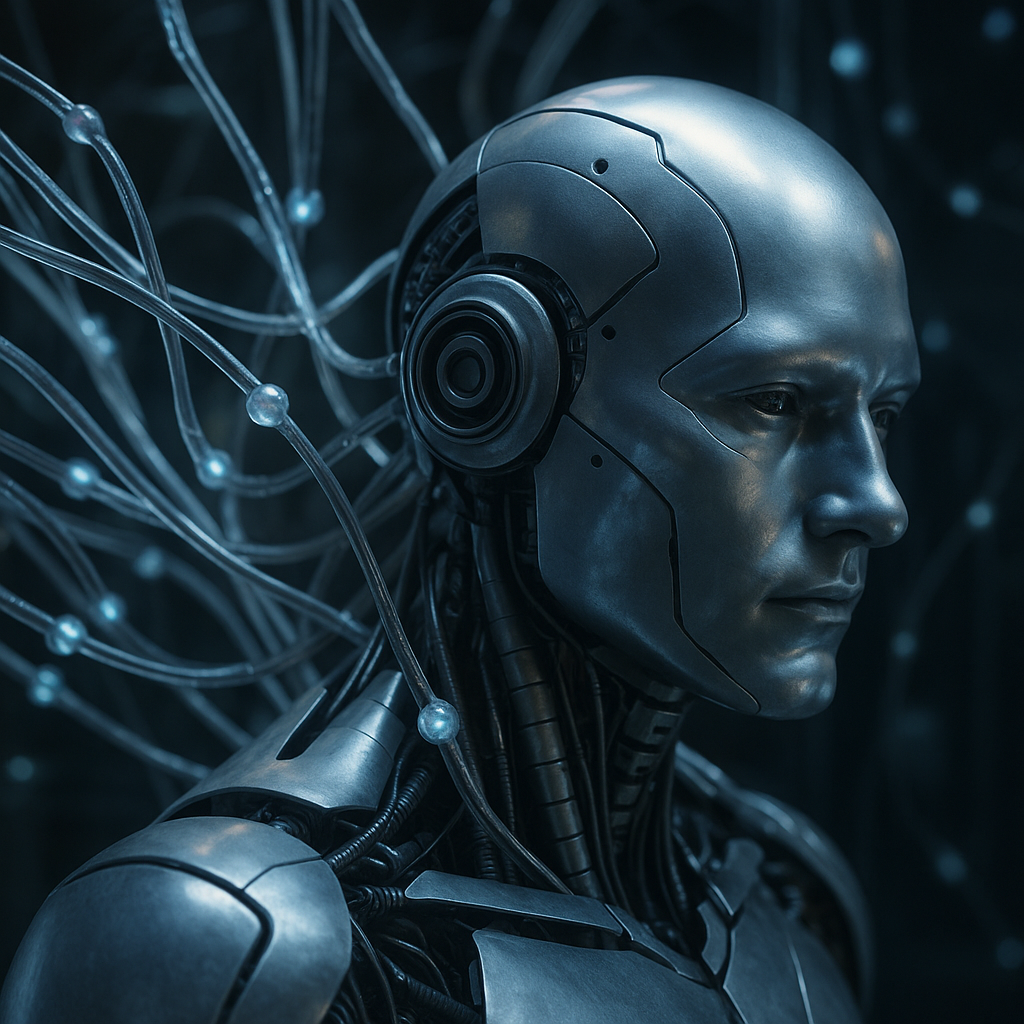Self-evolving artificial intelligence could transform healthcare, industry and science
At the multi-agent level, the framework specifies coordination mechanisms based on decentralized consensus updates and reliability-weighted influence. Over time, agents exhibiting stable collaboration patterns can form “meta-agents” with broader strategic capabilities. Learning processes integrate both global rewards and local credit assignment, with Shapley-value calculations estimating each agent’s contribution to outcomes.

A team of AI researchers has introduced a theoretical blueprint for a new generation of artificial intelligence capable of continuously modifying and improving itself without human intervention. The work proposes a structured pathway to AI systems that can autonomously evolve their architecture, knowledge, and capabilities over time.
Published in AI, the study "Liquid Adaptive AI: A Theoretical Framework for Continuously Self-Improving Artificial Intelligence" positions this “Liquid AI” concept as a long-term research direction with potential to fundamentally shift the relationship between AI models and their deployment environments. Unlike today’s systems, which remain largely static after training, Liquid AI is designed to grow, reorganize, and develop new proficiencies dynamically.
From static models to continuous evolution
The study diagnoses a major limitation in current AI: once deployed, most systems operate within fixed architectures, relying on periodic retraining rather than continuous adaptation. While this approach works for specialized applications, it constrains performance in environments where conditions, data, and objectives change rapidly.
Liquid AI aims to replace episodic development with a persistent, self-directed process of improvement. The authors define three interlocking mechanisms that form the backbone of the framework:
- Entropy-guided hyperdimensional knowledge graphs that reorganize themselves in real time based on information-theoretic criteria, enabling more efficient representation of emerging knowledge.
- A self-development engine employing hierarchical Bayesian optimization to modify architectures during operation, allowing the system to explore and integrate new structural configurations without halting service.
- A federated multi-agent framework in which individual AI agents develop specializations through distributed reinforcement learning, forming collaborative networks that adapt to collective objectives.
The researchers argue that this combination of real-time knowledge restructuring, adaptive architecture search, and multi-agent specialization could enable AI systems to evolve in response to novel challenges without requiring wholesale human-led redesigns.
Governing the complexity of self-modifying AI
According to the study, enabling AI systems to alter their own structure and behavior at runtime raises profound design and governance challenges. To address these, the authors embed their proposal in a mathematical framework that defines convergence bounds and stability conditions. These formal constraints ensure that self-modifications preserve coherent function and do not degrade core capabilities.
At the multi-agent level, the framework specifies coordination mechanisms based on decentralized consensus updates and reliability-weighted influence. Over time, agents exhibiting stable collaboration patterns can form “meta-agents” with broader strategic capabilities. Learning processes integrate both global rewards and local credit assignment, with Shapley-value calculations estimating each agent’s contribution to outcomes.
The authors also introduce evaluation criteria specifically tailored for continuously evolving systems. Instead of static benchmarks, these metrics track performance trends over time, measuring resilience, adaptability, and the emergence of new capabilities. This approach acknowledges that the success of a self-improving AI lies as much in its trajectory as in its snapshot performance at any given moment.
Long-term vision and practical realities
While the theoretical underpinnings of Liquid AI are laid out in detail, the study is candid about the practical hurdles. Building such systems would require infrastructure on the scale of current frontier-model training operations, sustained over long periods. The authors estimate that realizing the framework in a robust, safe form could take a decade or more of focused research and engineering.
They also highlight the ethical and safety dimensions of self-modifying AI. Allowing systems to autonomously change their architectures and develop new capabilities introduces potential risks that must be mitigated through careful monitoring, fail-safes, and transparency in decision-making processes. The paper points to emerging AI governance models that could be adapted to cover continuous self-improvement, stressing the need for both technical safeguards and regulatory oversight.
Potential application areas range from healthcare systems that can refine diagnostic methods in real time, to industrial process controls that adapt to changing environmental and market conditions, to scientific discovery platforms capable of autonomously proposing and testing hypotheses. In each case, the adaptive nature of Liquid AI could enable more responsive, resilient, and innovative performance than current AI architectures allow.
- FIRST PUBLISHED IN:
- Devdiscourse










